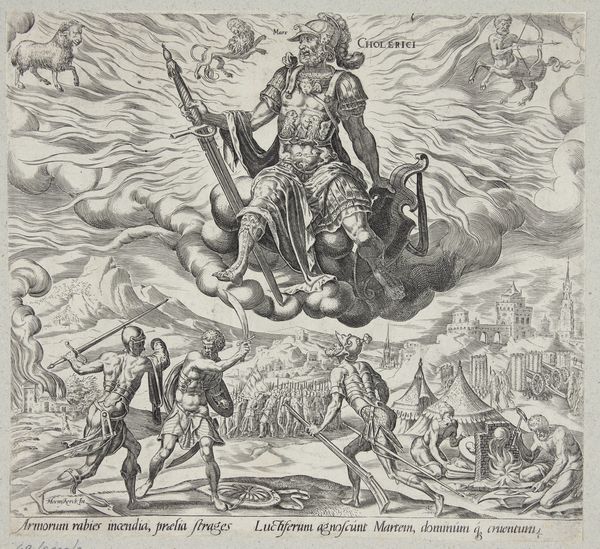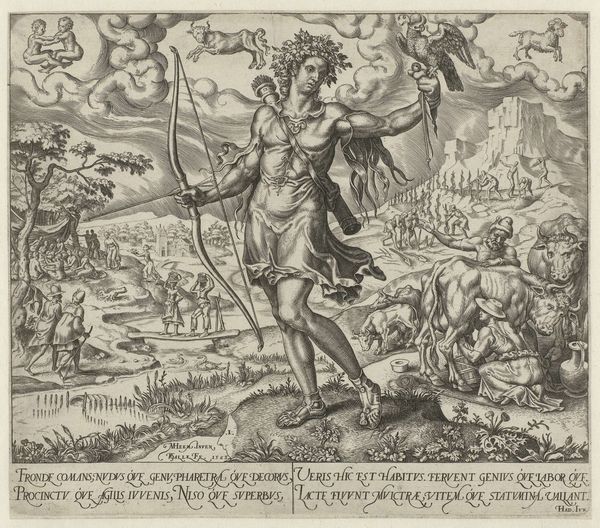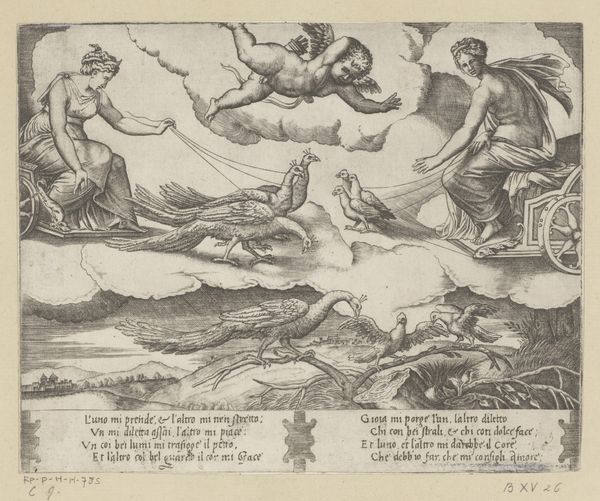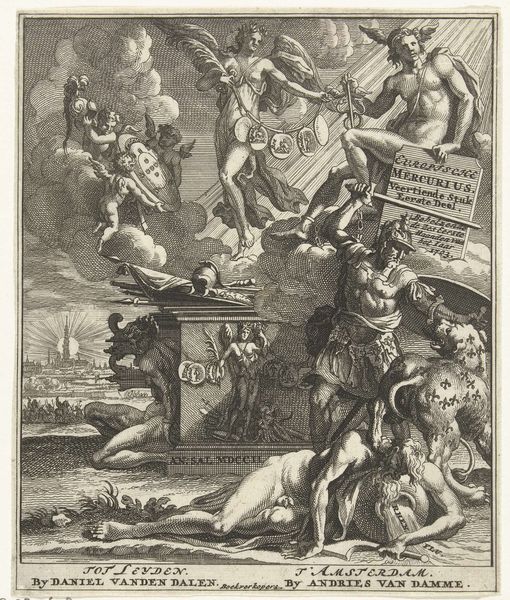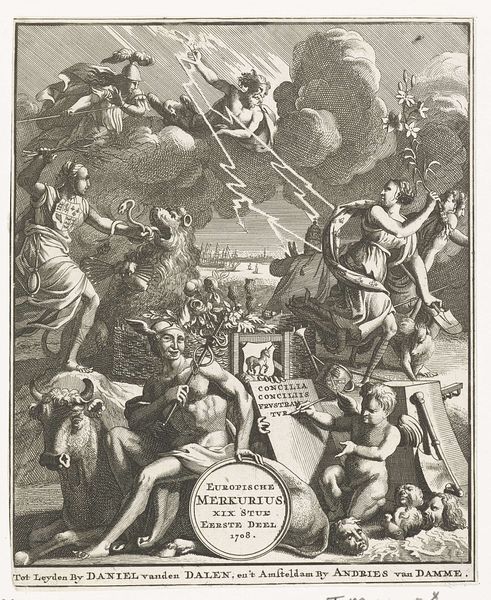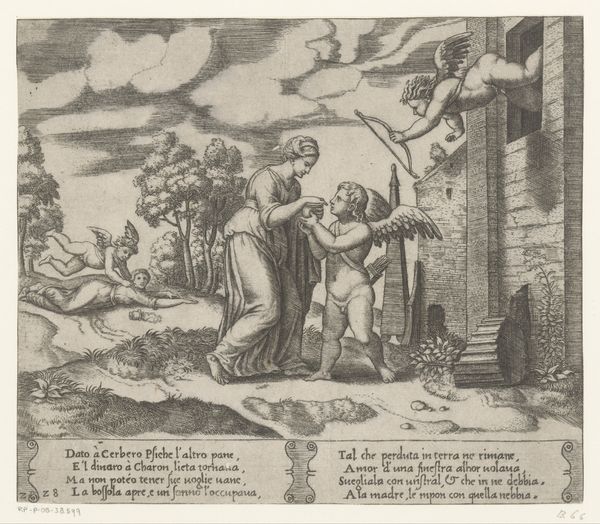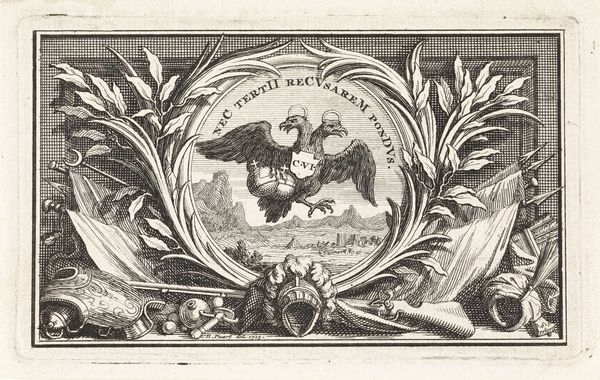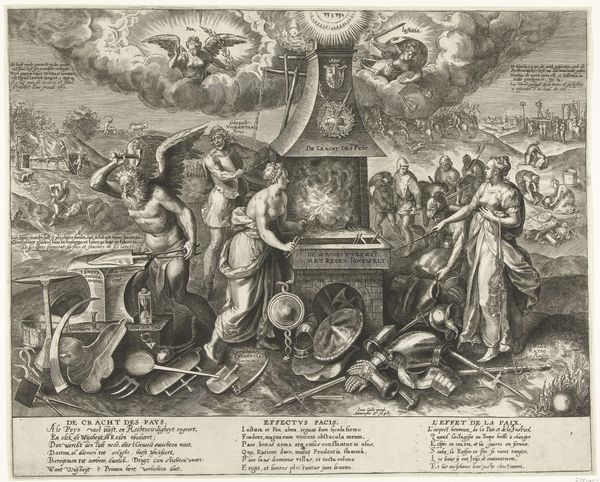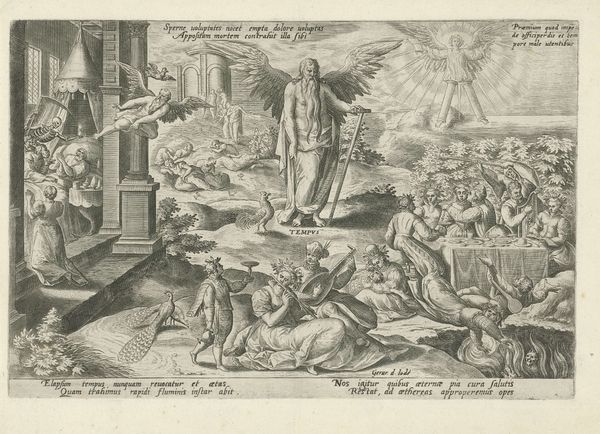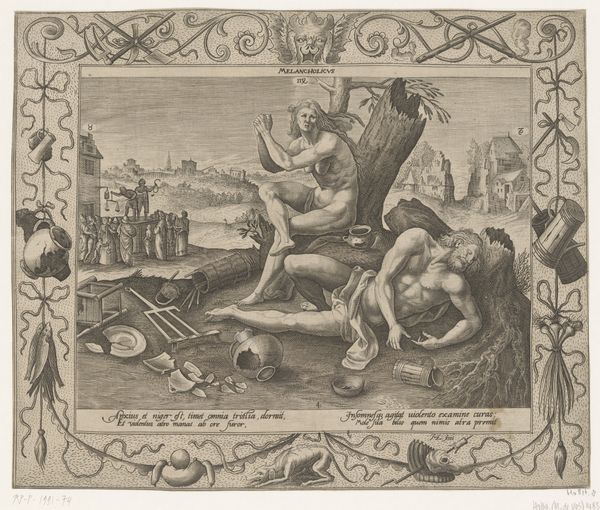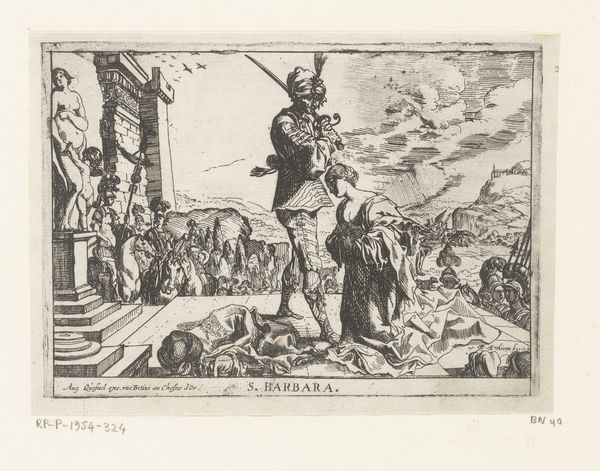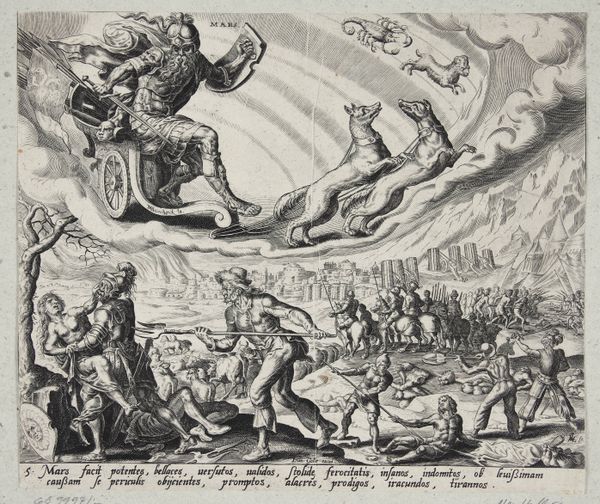
Titelprent van een serie overwinningen van koning Willem III, 1690 1690
0:00
0:00
print, engraving
#
portrait
#
allegory
#
baroque
#
dutch-golden-age
# print
#
pen illustration
#
old engraving style
#
landscape
#
figuration
#
line
#
cityscape
#
history-painting
#
engraving
Dimensions: height 151 mm, width 190 mm
Copyright: Rijks Museum: Open Domain
Curator: Here at the Rijksmuseum, we’re standing before "Titelprent van een serie overwinningen van koning Willem III," a 1690 engraving by Jan van Vianen. Editor: My first impression is that it's dense, detailed, and celebratory in a way that feels… overtly propagandistic, even for its time. Curator: The composition is quite elaborate, typical of Baroque prints. We have William III on horseback, framed by allegorical figures and inscriptions celebrating his victories "by land and sea". Note the central placement of the text proclaiming the victories and heroic deeds of His Majesty. It anchors the image. Editor: Yes, and the positioning of those defeated figures at the base feels pointedly symbolic. Look at the subjugated figures. What's particularly striking is how those vanquished are presented; their posture communicates the palpable cost of William’s victories on the land. What do we know about how it was circulated? Curator: Prints like this were often created and distributed widely to bolster political support and shape public opinion. The intricate linework really creates a dynamic sense of depth and movement despite being a monochrome work. Editor: And the use of allegory helps elevate William III to almost mythological status. Is that Fame, up there, trumpeting his achievements? It all contributes to this narrative of divinely ordained victory. These victorious rulers become paragons, obscuring the exploitation and brutality typically enacted in the process. Curator: Exactly. You also have the contrast between the clearly defined figure of William and the somewhat hazier background landscape. The linear clarity gives it a sense of power. Editor: Seeing this now, it is hard not to reflect on the construction of national heroes and the selective telling of history that accompanies it. Art as an instrument, rather than purely aesthetic achievement. Curator: Yes, looking at the line work it reflects back a controlled celebration of a ruler at a turbulent point in history, rendered with very intentional artistic choices that highlight the structure of leadership and triumph. Editor: Reflecting on how it speaks volumes about the complex intersection of power, art, and public perception during that period – the ways victory is actively envisioned by rulers of the era.
Comments
No comments
Be the first to comment and join the conversation on the ultimate creative platform.
